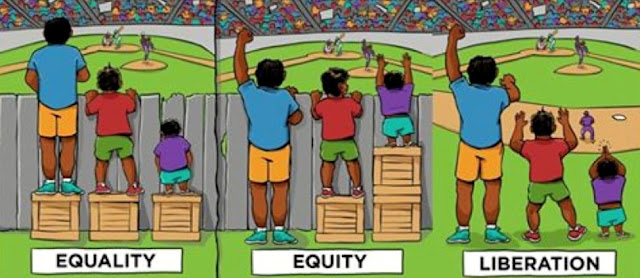DISTANCE LEARNING
Accessibility vs Inclusion. What’s the Difference?
Author: Lisa Nielsen
Go to Source
The World Report on Disabilities says that 15% of the population today lives with some form of disability. If you’re not in that 15% today, chances are you may be In the future. That’s because in the years ahead, the prevalence of those with disabilities will rise as the population ages. In fact The Institute on Disability reports that more than 1/3 of those over 65 have a disability.
It’s the law
Making the world accessible to those with disabilities isn’t just the right thing to do. For some it has become law. For example, in 1998, Congress amended the Rehabilitation Act of 1973 to require Federal agencies to make their electronic and information technology accessible to people with disabilities. More and more businesses are following this lead, not just for ethical reasons, but also because accessibility means more customers.
Defining accessibility
When accessibility is addressed, everyone can understand a space, integrate in it, and/or interact with its content. It lessens the burden for those needing accommodations to fully participate and engage.
Those trying to address accessibility understand the importance of technology. In fact, in many cases, digital is what makes accessibility possible. There are numerous ways that technology can serve as the eyes, ears, hands, and mouth for those with disabilities.
But creating with accessibility in mind, is just the beginning.
From accessibility to inclusion
Accessibility and inclusion are closely related, but inclusion goes even further. This chart outlines what happens when we move from accessible to inclusive.
|
Accessibility
|
Inclusion
|
|
Opens the door to an equivalent experience.
|
Provides the same experience for all people.
|
|
Considers people with varying abilities and differences afterwards.
|
Includes those with varying abilities and differences before and during the design process.
|
|
Designs “for” those with differences.
|
Designs “with” those with differences.
|
|
Usually refers to accommodations for those with disabilities.
|
Designed for all people. Those with disabilities as well as those who speak other languages, observe different religions, make different lifestyle choices, and anything else.
|
|
Designing afterwards by making adaptations, retro-fitting, and/or creating new and specialized design.
|
Designing, from the beginning, products and environments that can be used by all people.
|
|
You must take extra steps to make something accessible.
|
You don’t have to take extra steps to make something accessible. It is a design feature.
|
|
Uses neutral language for example, avoid saying things like “all rise” and use gender neutral language.
|
 |
| A box is an accommodation to make viewing accessible. Removing the fence makes it inclusive. Photo credit: University of Iowa |
